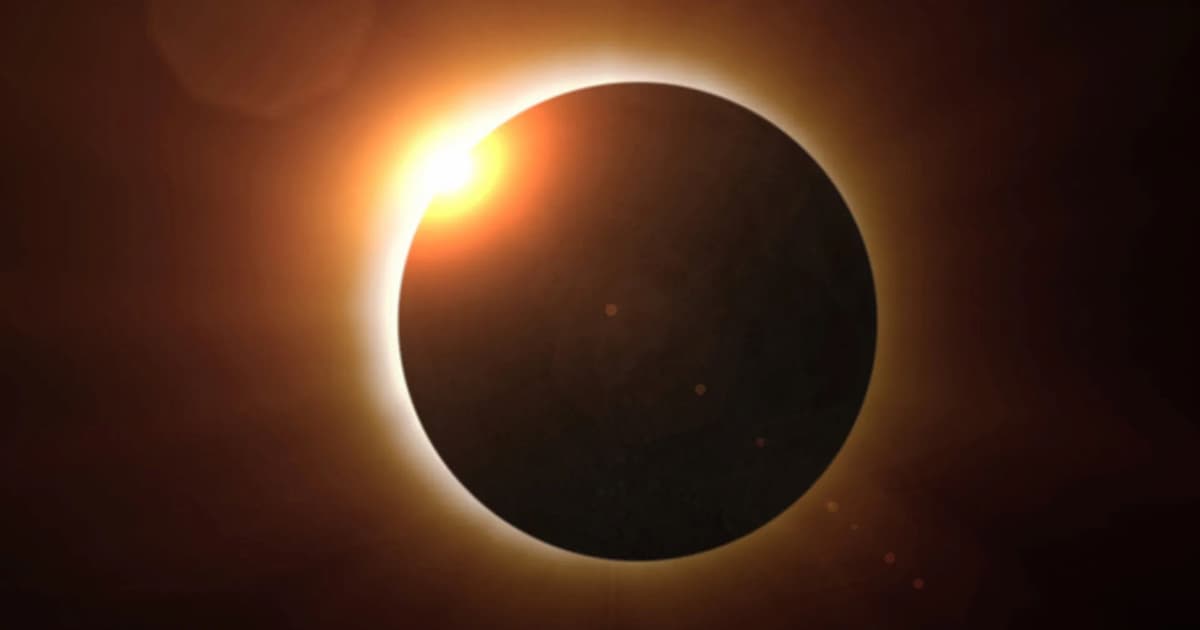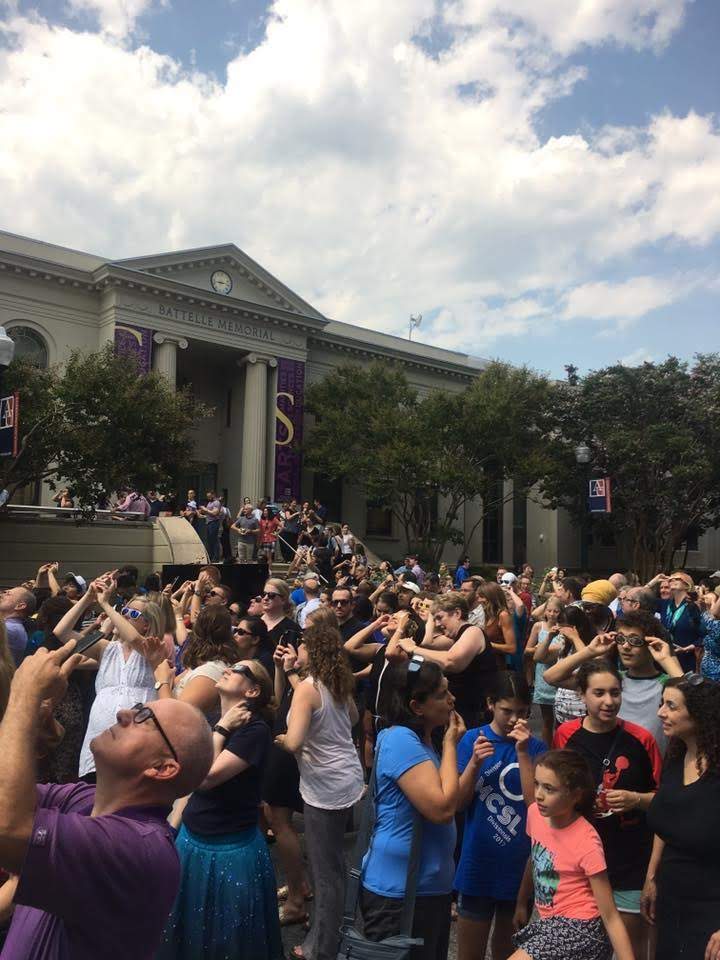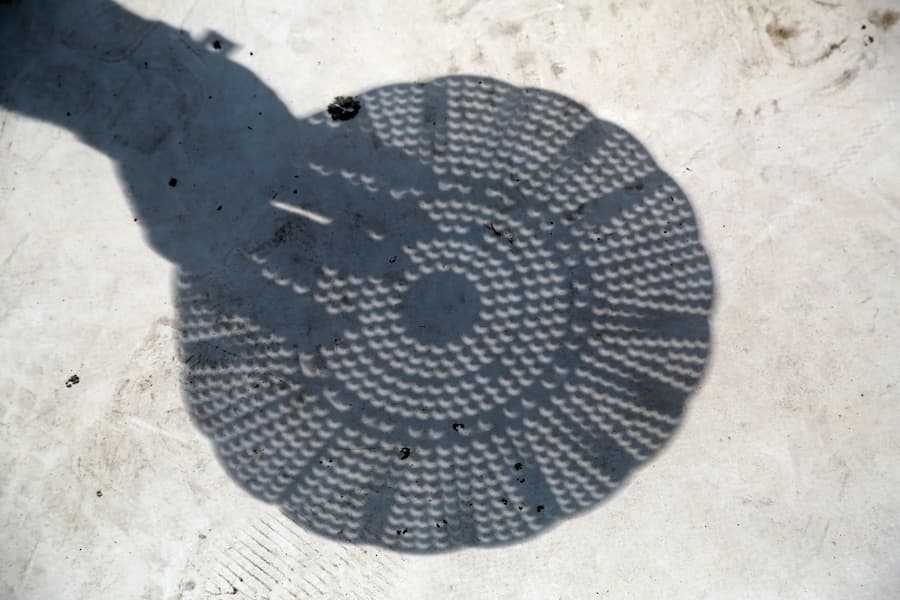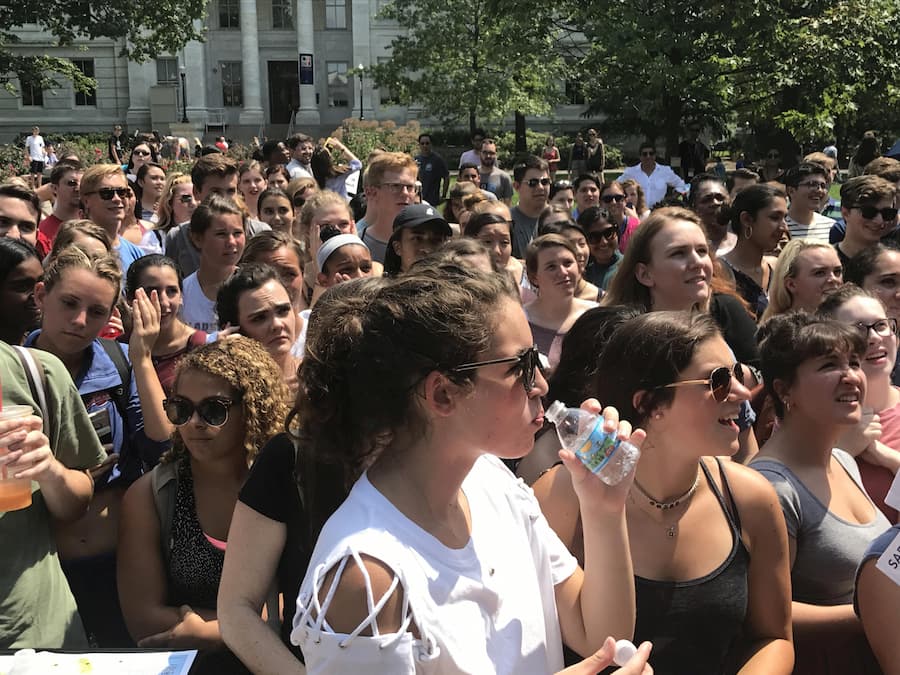Get Ready! AU Great American Solar Eclipse Viewing Party

It's being called the Great American Eclipse—a rarely-seen total eclipse of the Sun. On Monday, April 8, 2024, the shadow of the Moon will cross Mexico, the United States, and Canada. This spectacular total solar eclipse will be watched by millions of people, making it a record-setting astronomical event. It marks the last time the contiguous United States will experience a total solar eclipse until August 23, 2044—more than 20 years from now.
The best part: the partial solar eclipse can be viewed right from American University’s campus from 2:04 to 3:20 p.m. EST, on April 8, and the Department of Physics is welcoming everyone from the AU community to come to the quad for a free viewing party! Please stop by and watch with friends and colleagues.
2024 American University Eclipse Viewing Party
Viewing the Sun with eclipse glasses (we will provide NASA-issued eclipse glasses for attendees on a first-come, first-serve basis), recording the eclipse timing, checking the Sun using the Sun Spotter and Solar telescope, and engaging demonstrations about physics and space.
Date: Monday, April 8, 2024
Location: AU Quad (in front of Bender Library)
Event starts: 1:30 pm
Eclipse starts: 2:04 pm
Maximum eclipse: 3:20 pm
Eclipse ends: 4:32 pm
Wondering About What to Expect?
 Previous watch party, AU quad
Previous watch party, AU quad
Don’t be left in the dark! Read on as Physics Professors Silvina Guidoni and Aaron Grocholski explain the science behind this rare event:
Q: What exactly is a total eclipse?
Aaron Grocholski: A total solar eclipse is when the Moon passes directly in front of the Sun, briefly blocking the Sun from view, turning day to (almost) night as the Moon's roughly 100-mile-wide shadow sweeps across the Earth.
Q. What can I expect to see?
Aaron Grocholski: While AU is not in the path of totality, the Moon will appear to cover about 90 percent of the Sun as seen from campus. Even with this much coverage, there will still be enough sunlight that you might not notice a change in how bright it is outside. Using solar eclipse glasses to safely view the eclipse, you will be able to watch the Moon creep across the Sun, covering about 90 percent of it at maximum, before receding.
As a bonus, if there happen to be any sunspots on that day, you might be able to see them as small dark spots on the Sun.
Silvina Guidoni: You can also project the image of the partially covered Sun on a surface by aligning a small pinhole (~5mm) between the Sun and the screen (do not look at the Sun through the pinhole!). Anything with small holes will work. For example, you could use a colander to project many images of the crescent Sun. The small holes created by leaves on trees will also project a myriad of crescent suns on the floor if the angle is right.
 A shadow of a hand and a kitchen colander (which appears as a circle with holes) appears on a white surface. Close inspection reveals that where sunlight passes through the holes of the colander, small crescent shapes appear. Photo credit: Joy Ng, NASA
A shadow of a hand and a kitchen colander (which appears as a circle with holes) appears on a white surface. Close inspection reveals that where sunlight passes through the holes of the colander, small crescent shapes appear. Photo credit: Joy Ng, NASA
Q. Will sunglasses protect my eyes?
Aaron Grocholski: No. Normal sunglasses might seem protective, but they generally allow 15 percent of visible light to pass through. On the other hand, ISO certified solar eclipse glasses are around 100,000 times darker, blocking almost all visible light from reaching your eyes.
Members of AU's Physics Department will be handing out solar eclipse glasses on the Quad for safe solar eclipse viewing.
Silvina Guidoni: The only time and place when you can look safely with your naked eyes towards the Sun is in the few seconds or minutes when the Moon completely covers the surface of the Sun shielding the harmful solar radiation. Even with 99.99 percent coverage, the Sun is harmful to your eyes. Since DC is not on the path of totality, please be safe and only use certified solar eclipse glasses during the entire time.
For more information about staying safe while watching the eclipse, visit NASA’s website.
Q. Can I point my cellphone camera directly at the sun?
Aaron Grocholski: If you just point your phone at the Sun and snap a quick photo, the Sun will be overexposed, so you won't see much detail. There's also some concern that you could damage the sensor in the camera if you point it at the Sun for too long. Fortunately, if you want to take a photo of the eclipse, you can do the same thing you do to protect your eyes: cover the phone's camera with the solar eclipse glasses. Just be careful not to accidentally look directly at the Sun while lining up your shot!
Q. Where should I go to see it?
 AU eclipse watchers
AU eclipse watchers
Aaron Grocholski: The path of totality is the place to truly experience a total solar eclipse, but anywhere with clear skies and solar eclipse glasses—like AU’s quad! — will give you a nice view of the Moon passing in front of the Sun.
Silvina Guidoni: If you have an opportunity to travel to the path of totality, I highly recommend it. I have seen two total solar eclipses in my life, and they were breathtaking. When the Moon covered the Sun completely for a few minutes, the day became dark, like in a strange twilight zone, the temperature dropped, and animals got confused about what time of the day was. But the best part was the collective response of the people that gathered with me to watch the eclipse. There were happy shouts, dances, open mouths in awe, and a general sense that we were witnessing something amazing. I could see with my naked eyes the solar atmosphere (called the solar corona, “crown” in Spanish), in all its splendor, crowning what looked like a black sun.
